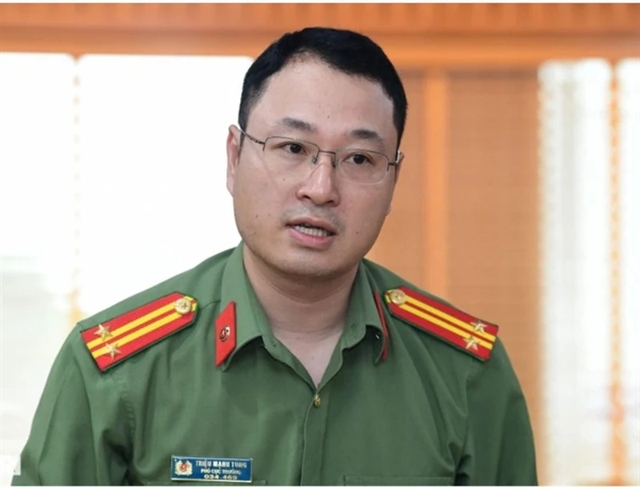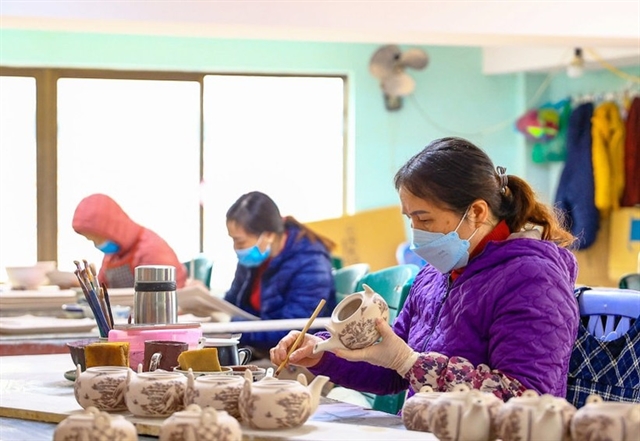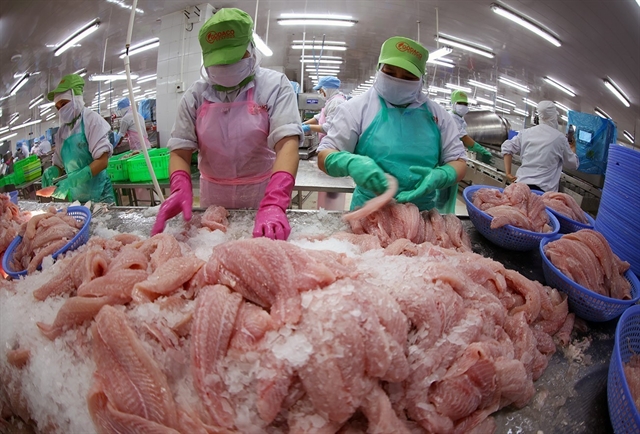 Opinion
Opinion

 |
| Lieutenant Colonel Triệu Mạnh Tùng, deputy director of the Cybersecurity and High-Tech Crime Prevention Department under the Ministry of Public Security. — Photo nhandan.vn |
In an interview with Vietnamplus, Lieutenant Colonel Triệu Mạnh Tùng, deputy director of the Cybersecurity and High-Tech Crime Prevention Department under the Ministry of Public Security, said that using biometric solutions to authenticate money transfer transactions is the most advanced measure at present and that Việt Nam is a pioneer in the field.
Could you evaluate the State Bank of Việt Nam’s decision which stipulates that from July 1 users transferring over VNĐ10 million online will need to authenticate their identity through facial recognition?
The Decision 2345 represents significant progress and addresses fundamental existing issues. Right from the initial stage, identity verification and clearing customer information are required to ensure that the person opening the account is a citizen with verified identity cards, matched with data from the National Population Data Centre of the Ministry of Public Security. This guarantees that the person opening the bank account is using legitimate documents with accurate information.
As a result, banks will be able to ensure that the account belongs to the rightful owner before facilitating the transactions. On the other hands, when scammers conduct money transfer transactions using their face or fingerprint, or other biometric characteristics, there are clear signs for authorities to check and handle.
Although biometric authentication has only been implemented since early July, there have already been cases of impersonators claiming to be bank officials offering to assist customers with setup. How has the Ministry of Public Security addressed this issue?
As soon as the new policy was implemented, some individuals abroad contacted people in Việt Nam, impersonating bank employees to call customers and assist in updating their biometrics.
Whenever there is a new policy, fraudsters continue to devise scenarios to lure victims into traps, sometimes more sophisticated, such as exploiting digital transformation policies or information update policies to get users to install malware-laden applications or accessing malicious links, thereby taking control of phones and devices.
Therefore, the banking sector needs to effectively implement Decision 2345 as a fundamental solution to eliminate non-authentic accounts used by fraudsters. Banks should continue to educate customers and protect them across multiple channels and electronic applications.
Do you think that biometric authentication for money transfer transactions will ensure customers feel completely secure about the safety of their bank accounts?
We can see that to implement this solution, banks have to invest in infrastructure and technology to ensure that when conducting face scans for transactions, it is a live face, so it minimises the risk of forgery.
However, it must be acknowledged that with the development of science and technology, nothing can be guaranteed. At this time, we cannot confirm whether biometric authentication can be bypassed or not.
Nonetheless, it must be affirmed that using biometric authentication when transferring money is the most advanced measure available today. Việt Nam is also one of the pioneering countries in the world to implement such measures.
Many people are concerned that criminals might use deepfake technology, which uses AI to create fake images, videos or sounds that can perfectly mimic an individual's voice and appearance, to make transfers. Is this possible?
It is true that people need to be cautious about scammers exploiting new policies to deceive, such as calling to collect biometric data. There is still a risk that criminals could use deepfake technology to bypass biometric authentication. Therefore, banks and relevant agencies must be ready with solutions and plans to respond.
In fact, deepfake technology has been around for quite some time and there are already anti-deepfake solutions being implemented. If there are criminal groups that can find ways to bypass these solutions, we must continue to research and strengthen measures to prevent and combat new types of crime before they become widespread.
However, we believe that not all criminal groups have the capability to execute such advanced technical measures. Additionally, we will have timely upgraded solutions in place to prevent widespread misuse.
Therefore, when transferring more than VNĐ10 million, apps often prompt customers with messages like "bring your face closer," "turn left, turn right," "smile," etc., to ensure it is a real person and not a static image. Customers should not worry too much about this.
In the future, how will the Ministry of Public Security continue to cooperate with the State Bank of Việt Nam to introduce solutions to enhance security and protect customers?
The Ministry of Public Security will always work with the State Bank of Việt Nam and credit institutions to ensure the security and safety of the banking information system. In the future, if there are new fraud methods, we will promptly work with the central bank and other banks to develop solutions to address and close any remaining gaps, minimising criminal activity.
For instance, if a deepfake solution emerges and bypasses current measures, the ministry will quickly collaborate to address these issues in a timely manner and achieve the goal of reducing transactions related to illegal activities.
As for the banks, I believe they need to continue actively promoting customer protection across multiple channels, the simplest being through apps. Banks should also develop applications based on scientific and technological foundations by connecting to the National Population Database and data from the Ministry of Public Security.
Moreover, banks need to be particularly vigilant about accounts with unusual transactions and alert account holders to prevent unfortunate transactions in a timely manner. — VNS




